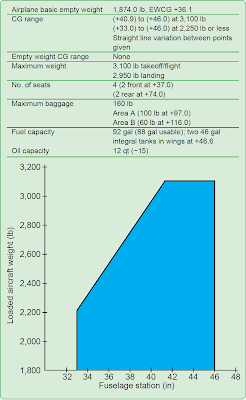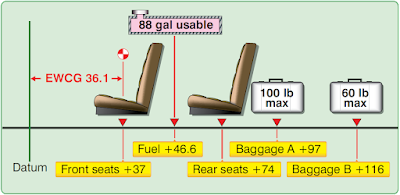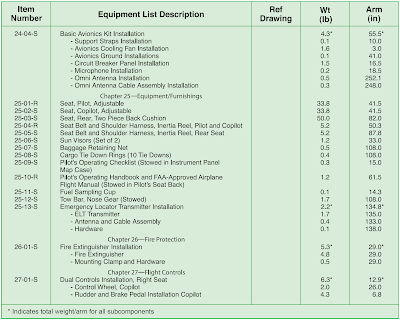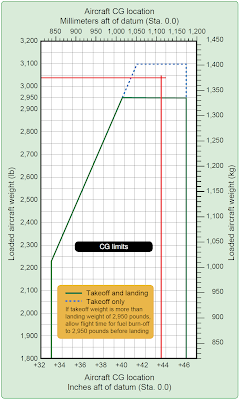 |
| Figure 1. Weight and balance data needed to determine proper loading of a small airplane |
Determining the Loaded Weight and CG
An important part of preflight planning is determining that the aircraft is loaded so its weight and CG location are within the allowable limits. The methods of accomplishing this are the manual computational method using weights, arms, and moments; the chart method using weight and moment indexes [Figure 2]; and the loading graph method, which eliminates the need for some mathematical calculations.
 |
| Figure 2. Airplane loading diagram |
Manual Computational Method
The manual computational method uses weights, arms, and moments. It relates the total weight and CG location to a CG limits chart similar to those included in the Type Certificate Data Sheet (TCDS) and the Pilot’s Operating Handbook/Aircraft Flight Manual (POH/AFM).
 |
| Figure 4. Typical equipment list |
As part of preflight planning, fill in the blanks in the worksheet with the specific data for the flight.The following weights were used to complete the sample weight and balance worksheet in Figure 3.
Pilot: 120 lb
Front seat passenger: 180 lb
Rear seat passenger: 175 lb
Fuel (88 gal): 528 lb
Baggage A: 100 lb
Baggage B: 50 lb
 |
| Figure 5. CG limits chart from a typical POH |
To determine whether or not the airplane is properly loaded for this flight, use the CG limits chart. [Figure 5] Draw a line vertically upward from the CG of 43.54 inches and one horizontally to the right from the loaded weight of 3,027 pounds. These lines cross inside the envelope, which shows the airplane is properly loaded for takeoff, but 77 pounds overweight for landing. Note that for this sample chart, the envelope is defined by the solid black line that indicates CG limits at or below the maximum weight for takeoff and landing. There is an additional region identified by a segmented black line that includes weights suitable only for takeoff. It is important to note these subtle differences as they may or may not be found in every POH/AFM.

